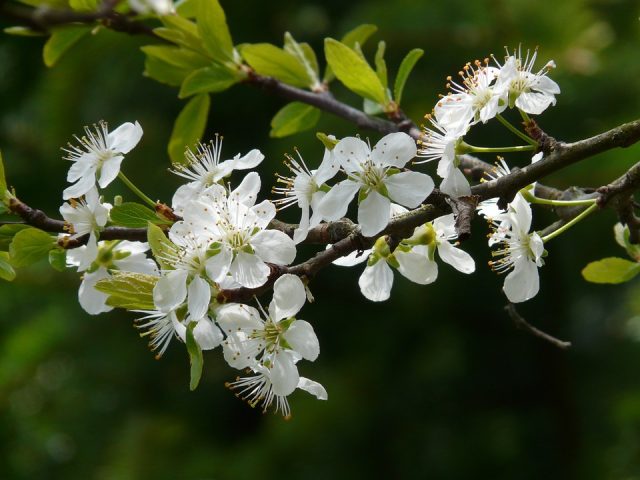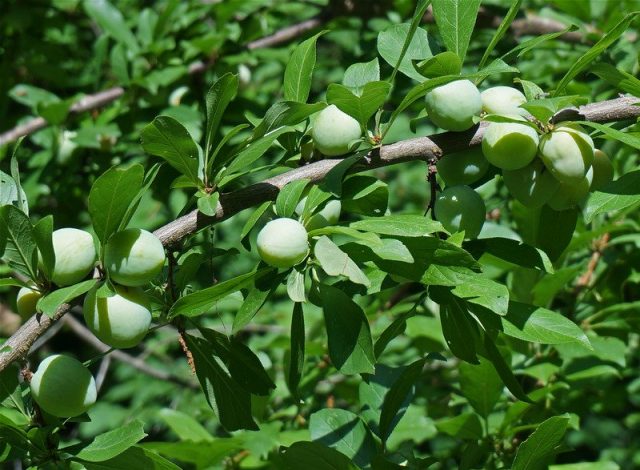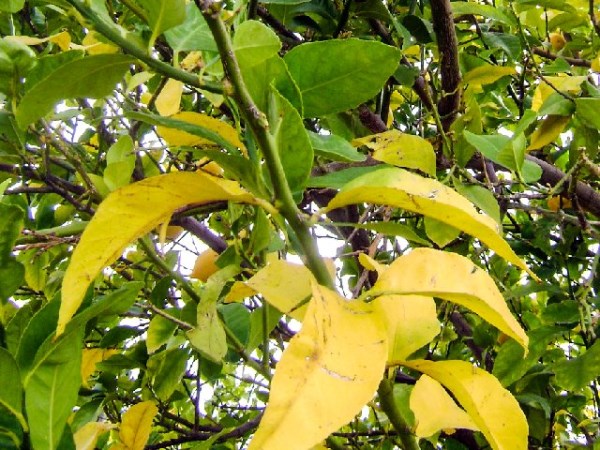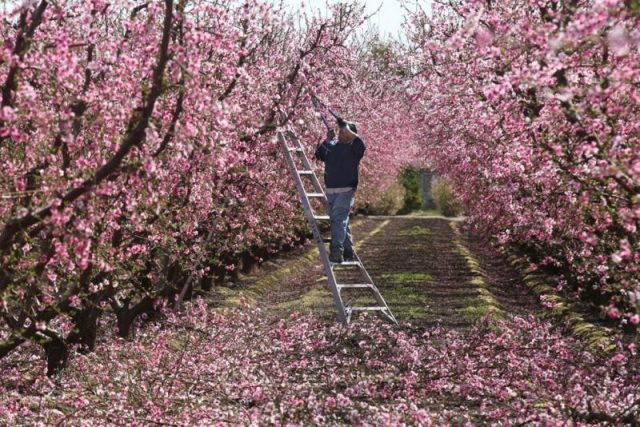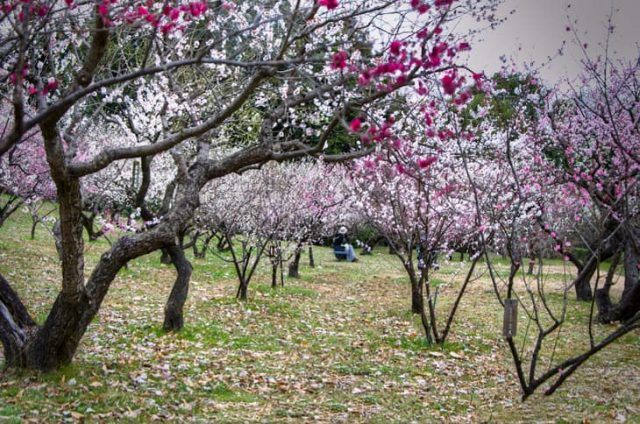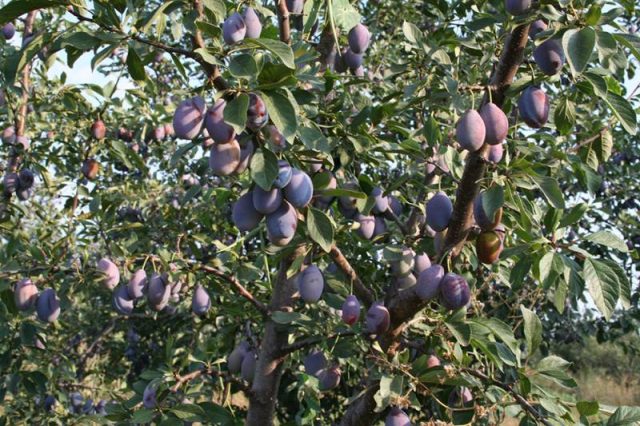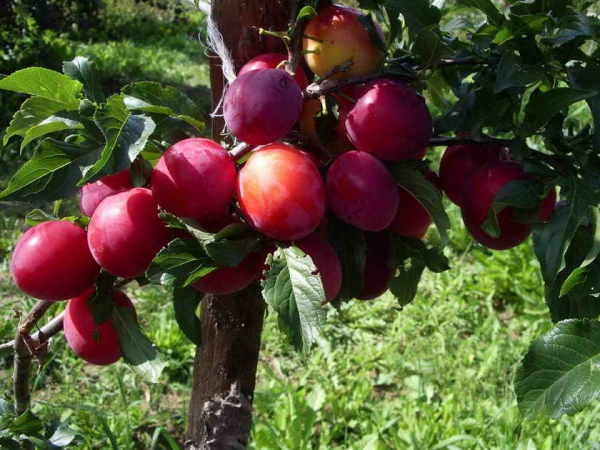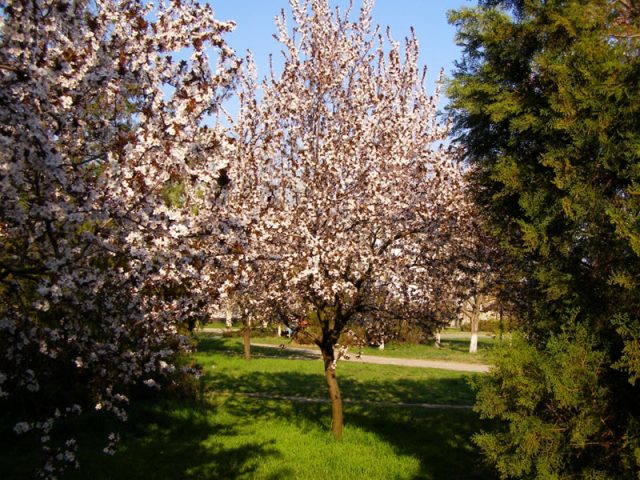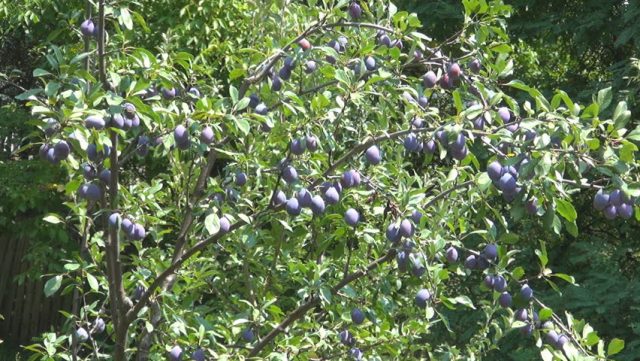Content
Plum is a rather moody fruit tree. Plum fruits fall - this is a problem that is very common among gardeners. It is interesting to figure out why this happens and how to deal with dropping fruits.
Why plum fruits fall
There are many problems that harm the normal development of fetuses. Determining why a plum is shedding fruit is difficult. However, the range of probable causes can be narrowed down based on the period in which it crumbles.
Why did the plum shed flowers
Plum trees bloom in late April or early May. And it often happens that the ovary produces very few flowers - or completely crumbles before the flowering itself ends.
The reason most often lies in the freezing of the ovary. In the middle lane, late frosts are not uncommon - they harm the flowers and can irreversibly damage the ovary. As a rule, you can notice the presence of a problem at the very beginning of flowering - if the pistils and stamens of the plum are brown, it means that frosts have caused damage to the ovary.
Why does the ovary fall off the plum
The ovary is the name for the fruits that have just appeared, which do not yet exceed the size of a pea in size. Normally, the ovary should appear immediately after flowering, so that later it can develop unhindered to large, sweet, ripe berries.
If the plum drops the ovary, and it crumbles, most likely, the reason lies in poor-quality pollination. Most plums are self-fertile and require proximity to similar varieties - without this, fruits will not be able to form normally. If there are few pollinators, or they are located too far away, the ovary turns out to be of poor quality - and, accordingly, crumbles even in the early stages.
Why does plum shed green fruits
If the flowering and ovary have gone well, then problems may arise at the next stage. When green plum fruits fall, there may be several factors.
- First of all, the damage can be caused by a lack of moisture. Green plums appear on the branches in early summer - during this period, dry weather is often present. If the roots of the tree do not have enough water, then the plum simply does not have the resources to feed the ovary, so it crumbles.
- Another common reason is waterlogging of the soil. Excess water for plums is just as destructive - its roots begin to rot, and this again leads to the fact that plums fall off.
- It is not uncommon for a green plum to crumble due to garden pests such as the plum sawfly. The larvae of this insect feed on the bones and pulp of the immature, young fruits - therefore, the plant sheds even green fruits.
Plum fruits turn yellow and fall off
In the middle of summer, the plum ovary acquires a yellow tint, gradually ripening. But at this stage, the plum also often crumbles and discards young fruits. Most often this occurs due to damage to the ovary by diseases and pests. In particular, the ovary can be damaged:
- moniliosis;
- clasterosporium disease;
- coccomycosis;
- rust;
- gum flow;
- drying out;
- and other diseases of fruit trees.
Other reasons why the yellow plum falls off without ripening are not excluded - for example, this can still occur due to a lack or excess of moisture.
Why plum fruits turn blue and fall off
When plums become darker in color, it seems to gardeners that they no longer need to fear for the harvest. However, plum fruits fall off before ripening and at this stage. Most often this happens due to garden pests - in particular, the pest, which forces the plant to shed the ovary.
The larvae of the tolstopod appear in the ovary in early May or June, shortly after flowering. The insect lays eggs in the ovary bones. It is almost impossible to understand that the plant is affected by a thickened leg, but the plant crumbles. Outwardly, the ovary develops normally and has time to change color to a rich dark, but then it still drops the fruits.
Plum leaves fall
The problem can be not only that the ovary is crumbling, but also that the plum sheds its leaves. The following common reasons can be distinguished:
- Unsuitable soil. Too wet soil or groundwater passing close to the surface contributes to the death of the roots, and, accordingly, the plum crumbles.
- Winter deep freezing. Due to low temperatures, the plum may not die, but its leaves in the summer will begin to massively turn yellow and fall off.
- Infections and fungal diseases. For example, the reason for the fall of the fruits of the Stenley plum and other varieties often lies in coccomycosis, chlorosis, and verticillosis. All of these diseases affect plum leaves, contributing to the appearance of yellow spots. As a result, the tree sheds its leaves, the crown crumbles abundantly.
Why plum fruits fall: the most common reasons
Having considered the main problems due to which the ovary crumbles and the plum drops the berries, several main reasons can be identified - and delve into them in more detail.
Spring frosts
Sharp cold snaps in spring are even more dangerous for plums than severe winters. The fact is that in the spring the ovary wakes up for the growing season. Even small frosts damage the developing flowers and fruits, and the plum falls off before it ripens.
Lack of pollinators
Plum yield and fruit quality directly depend on the quality of pollination. If there are no pollinators, or there are too few of them, or they are located far from the plum tree, then the plant sheds the ovary. And even those fruits that have appeared can fall off earlier than they ripen.
Failure to comply with watering rules
Excess or lack of moisture is equally dangerous for the ovary of a plum. With prolonged drought, the roots dry out and die off, with stagnant water, they begin to rot and die. All this affects fruiting - as a rule, with improper watering, the plum still sets the fruits, but crumbles and discards them green or barely yellow.
Lack or excess of nutrients
For healthy development, the plum tree needs a balanced fertilization with mineral fertilizers and organic matter. Lack of nitrogen, potassium or fluoride will slow down the growth of the plum, and the fruits will begin to form in less quantity and fall off. At the same time, an excess of fertilizers is also dangerous - for example, it is precisely because of the increased content of lime in the soil that the fruit tree is often affected by chlorosis, crumbles and sheds the ovary.
Pests and diseases
Harmful insects and diseases can affect the plum ovary at almost any stage of fruit growth. Diseases are most often the result of improper plant care - they appear from unsuitable soil, improper watering, insufficient sanitary pruning.
As for pests, it can be quite difficult to recognize their presence in a plum tree that is crumbling. Some of the insects lay larvae inside the fruit, and at first glance it seems that the plum is in perfect order.Damaged pulp or bone is only found with a closer examination of fallen fruits. The moth, sawfly and thickfoot are especially dangerous for the plum - they eat the ovary from the inside, leaving almost no noticeable external traces, but discards the fruits of the plum.
What to do if plum fruits fall
The most pressing question that worries summer residents is what measures can be taken if a plum falls, and what should be done to prevent this from happening in principle?
- If the plum sheds its fruit due to winter cold or spring frost damage, only high-quality prevention will help. First of all, it is worth planting only frost-resistant varieties in the middle lane and cold regions. For the winter, the trunks of plum trees and the ground around you need to be covered with spruce branches, trample down tightly and form a snowdrift near the trunk - all this protects the ovary from freezing, and in the spring it does not crumble.
- If the ovary falls off after the flowering of the plum, then the neighboring trees should be transplanted closer to the plum. It is also worthwhile to double-check that the varieties bloom at the same time - perhaps pollination does not occur simply because the flowering periods of the trees do not coincide.
- If the ovary crumbles due to lack or excess of moisture, watering should be reviewed. It is carried out as needed - once a month with normal precipitation, every 10 days during a drought. You need to check the condition of the soil around the trunk - if the soil is wet, watering can be skipped. If the plum is clearly suffering from drought and therefore sheds fruits, you can pour water to the roots ahead of time. You should also take into account the presence of neighboring trees in the immediate vicinity - their roots can take away some of the moisture from the plum.
- If the plum drops the ovary due to a lack of fertilizers, then most likely, this year a good harvest can not be expected. Nevertheless, in the summer, in June, the tree still needs to be fed with mixtures containing potassium. In autumn, it is recommended to scatter manure around the trunk, and in the next spring, apply nitrogenous fertilizers, for example, urea. If the plant crumbles from an excess of fertilizer, it is necessary to reduce the amount of fertilizing - and pay attention to the composition of the soil, since it is possible that it contains too much lime.
As for the pests, due to which the plant drops berries, and the ovary crumbles, it is most convenient to deal with them with the help of preventive spraying of the ovary. In the spring, during the flowering period, it is necessary to process the plum, so that the fruits do not crumble, with special chemicals - Fitoverm, Lepidocid, Confidor and Dantop. The risk of pests affecting plums can be reduced by digging up the soil around the tree in the fall, as well as removing fallen leaves and fruits in time, preventing them from rotting.
Conclusion
Plum fruits fall off - a very unpleasant problem, but not a verdict for a plum ovary. If the plum crumbles abundantly and sheds its fruits, then it is quite difficult to save the harvest of the current year, it will be less in any case. But competent struggle and prevention will help restore health to the plum next year.
